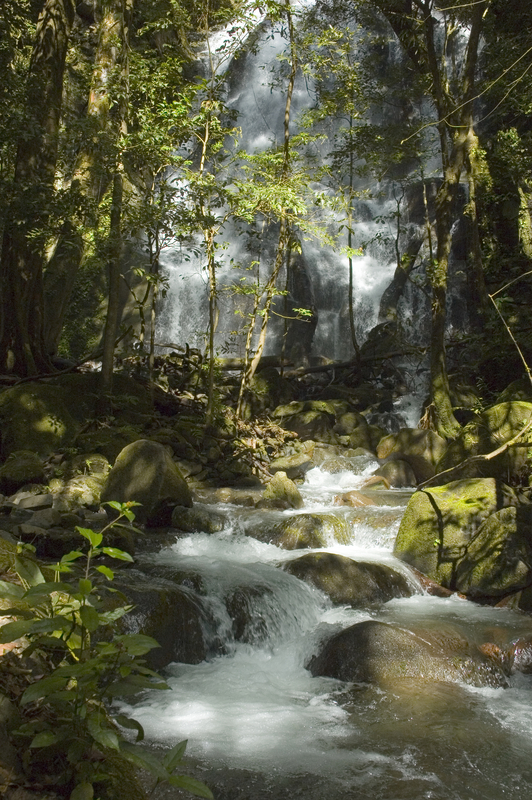The Rincon de la Vieja National Park in Costa Rica is part of the Guanacaste Conservation Area World Heritage Site that was created as a wildlife refuge corridor for migrating animals to move between the rainforests and the dry northern areas of Costa Rica. Rincon de la Vieja is a volcano, and the most accessible of all the volcanoes in the range. The natural wilderness has not been impacted adversely by tourism and visitors are welcome to see the almost pre-historic natural beauty.
Visitors can climb the volcano during the dry season between February and April. This is the time the views are spectacular. At other times the clouds will obstruct the view. The beginning of the path at the Las Pailas Ranger Station, progresses for six kilometres in a gentle slope. The last two kilometres are steep and take visitors right to the edge of the crater.
 The landscape is like a step back to when the earth was being formed with the barren volcanoes and steaming craters. The last eruption was 3,500 years ago, but the crater is still active. There is an acid lake in the crater 200 meters down and there are often strong winds on the edge, so visitors should not get too near the edge when the winds are high. The ground is gravel and ash and can be very slippery. Even if it is warm at the beginning of the hike, it may become cool or cold on the top so long pants and a warm jacket are recommended.
The landscape is like a step back to when the earth was being formed with the barren volcanoes and steaming craters. The last eruption was 3,500 years ago, but the crater is still active. There is an acid lake in the crater 200 meters down and there are often strong winds on the edge, so visitors should not get too near the edge when the winds are high. The ground is gravel and ash and can be very slippery. Even if it is warm at the beginning of the hike, it may become cool or cold on the top so long pants and a warm jacket are recommended.
Santa Maria volcano is the highest volcano at 1,916 meters, but the crater is inactive. The park also has fascinating thermal mudpots and beautiful waterfalls as well as freshwater lakes and swimming areas that visitors can use.
The area is a refuge for wildlife and there is lots of it. Blue-throated goldentail, laughing falcon, whitefronted parrot, spectacled owl, black-faced solitaire, red trogon, emerald toucanet, curassow and Montezuma oropendola are some of the birds visitors watch in the area.
The mammals visitors are likely to see are peccaries, skunks, monkeys and coatis, two-toed sloths, anteaters and armadillos. There are also cougars, kinkajous, and jaguars that are rarely seen. The national flower Guaria Morada, an orchid, is also in abundance on the sides of the volcanoes.
Liberia is the closest city and can be reached from San Jose by the Interamerican highway. About five miles past Liberia turn right to Curubande and there will be park signs that direct visitors to the entrance of the park.





